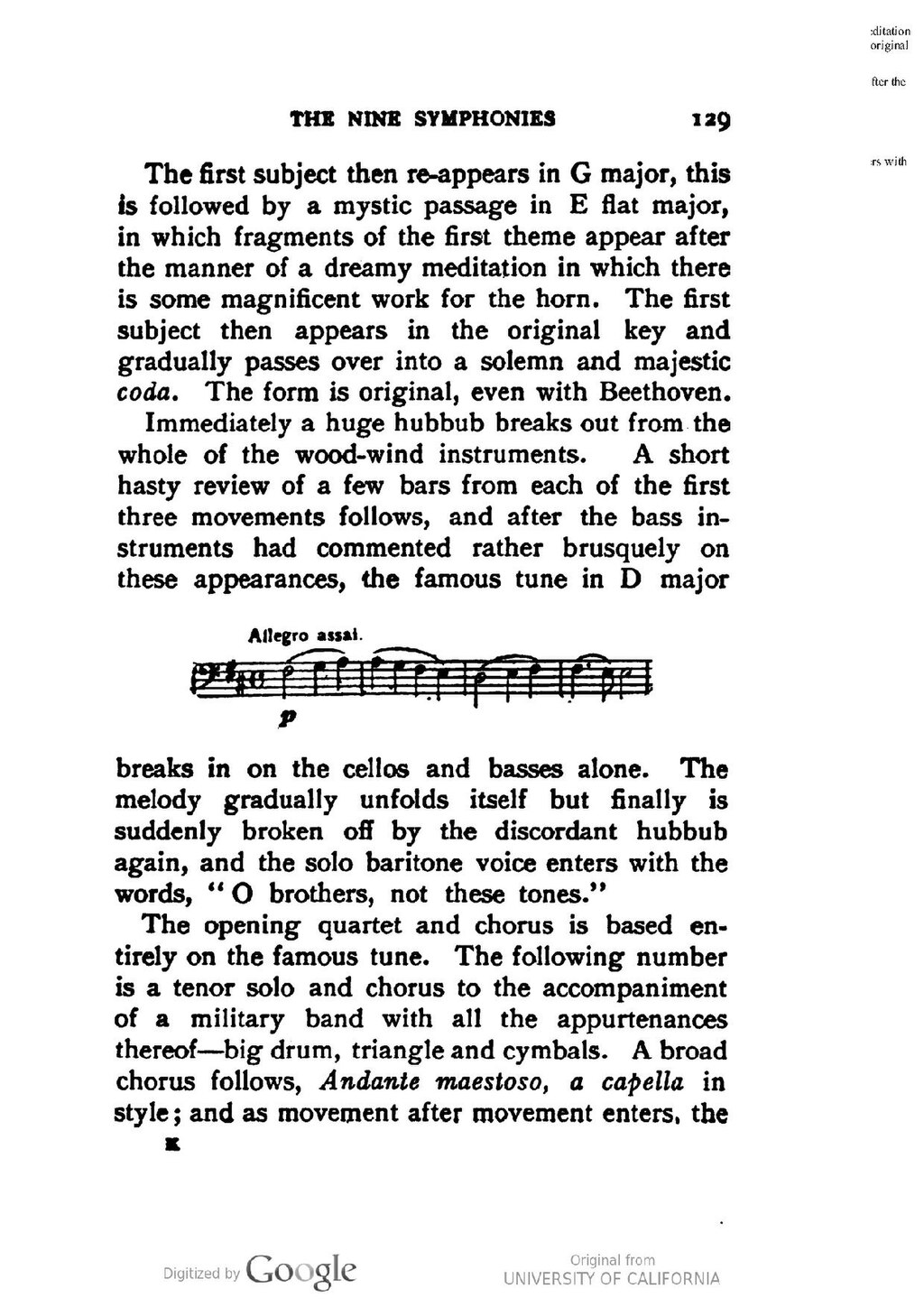The first subject then re-appears in G major, this is followed by a mystic passage in E flat major, in which fragments of the first theme appear after the manner of a dreamy meditation in which there is some magnificent work for the horn. The first subject then appears in the original key and gradually passes over into a solemn and majestic coda. The form is original, even with Beethoven.
Immediately a huge hubbub breaks out from the whole of the wood-wind instruments. A short hasty review of a few bars from each of the first three movements follows, and after the bass instruments had commented rather brusquely on these appearances, the famous tune in D major

breaks in on the cellos and basses alone. The melody gradually unfolds itself but finally is suddenly broken off by the discordant hubbub again, and the solo baritone voice enters with the words, "O brothers, not these tones."
The opening quartet and chorus is based entirely on the famous tune. The following number is a tenor solo and chorus to the accompaniment of a military band with all the appurtenances thereof—big drum, triangle and cymbals. A broad chorus follows, Andante maestoso, a capella in style; and as movement after movement enters, theK
